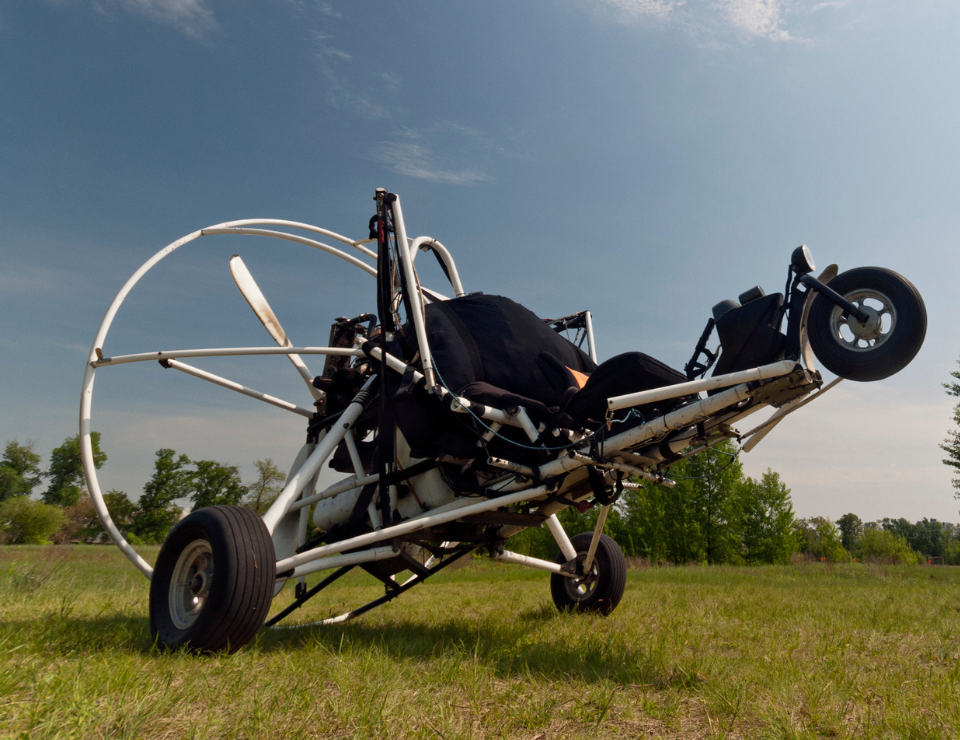
The Ultimate Paramotoring Gear Guide: Essentials for Soaring Safely
Paramotoring is not just an adventure; it’s a thrilling and liberating experience. The sensation of
flying like a bird, with the wind in your face and breathtaking landscapes below, is truly
unmatched. However, to fully enjoy this exhilarating sport, you need the right equipment. In this
comprehensive guide, we’ll walk you through the essential paramotoring gear that ensures you
soar safely through the skies.
- Wings and Paragliders
The heart of any paramotoring setup is the wing or paraglider. This is what keeps you in the
air, and your safety and performance depend on it. There are various types and models to
choose from, but consider these key factors:
- Size: The size of your wing should match your weight and experience level. Smaller
wings are more agile but require more skill to handle, while larger wings offer stability and ease
of control. - Certification: Ensure that your wing is certified by a recognized authority like EN
(European Norm) or DHV (Deutscher Hängegleiterverband). Certification indicates that the wing
meets safety and performance standards. - Reserve Parachute: Many paramotor wings come with a built-in reserve parachute
system, adding an extra layer of safety. Consider investing in one with this feature.
- Paramotor Engines
The paramotor engine is your power source and must be reliable and efficient. Here are some
aspects to consider when choosing an engine:
- Thrust-to-Weight Ratio: This ratio affects your climb rate and overall performance. A good
rule of thumb is to have a paramotor that produces at least 2.5 times your body weight in thrust. - Noise Level: Quieter engines are not only more pleasant for you but also less disruptive
to the environment. - Fuel Efficiency: A fuel-efficient engine can extend your flight time and reduce operating
costs. - Electric vs. Gasoline: Electric paramotors are becoming more popular for their quiet
operation and environmental friendliness, but they may have shorter flight times compared to
gasoline engines.
- Harness and Reserve Parachute
Your harness is your connection to the paramotor and wing. It should be comfortable,
adjustable, and equipped with a reserve parachute container. Here’s what to look for:
- Comfort: You’ll spend hours in your harness, so comfort is paramount. Ensure it has
adequate padding and adjustable straps for a snug fit. - Weight Distribution: A well-designed harness distributes your weight evenly, reducing
fatigue during long flights. - Reserve Parachute: Your reserve parachute is your last resort in case of an emergency.
Make sure it’s packed correctly and inspected regularly.
- Helmet and Communication
Safety should always be a top priority, and a helmet is a crucial piece of protective gear. Look
for a helmet designed for paramotoring that offers:
- Impact Protection: Your helmet should meet safety standards for impact resistance.
- Visor: A visor protects your eyes from wind, debris, and the sun.
- Communication: Some helmets come with built-in communication systems, allowing you
to stay in touch with other paramotor enthusiasts in the air.
- Flight Suit and Apparel
Your attire matters when you’re soaring through the skies. A proper flight suit and clothing can
enhance your comfort and safety:
- Flight Suit: A flight suit helps protect you from wind chill, insects, and the elements. Look
for one with good ventilation to stay comfortable in different weather conditions. - Footwear: Sturdy and comfortable footwear is essential. Some pilots prefer ankle-high
boots for added support during takeoff and landing. - Gloves: Flight gloves keep your hands warm and protected while providing good tactile
feedback.
- Navigation and Communication Devices
Staying informed about your flight conditions and communicating with fellow pilots is essential
for safety. Consider these devices:
- GPS: A GPS unit can help you track your flight path, monitor altitude, and navigate back
to your launch site. - Radio: A two-way radio allows you to communicate with other paramotor pilots, especially
when flying in groups. - Weather App: Install a reliable weather app on your smartphone to check wind conditions
and forecasts before takeoff.
Recent Posts
Admin0 Comments
PPG Training
Admin0 Comments




